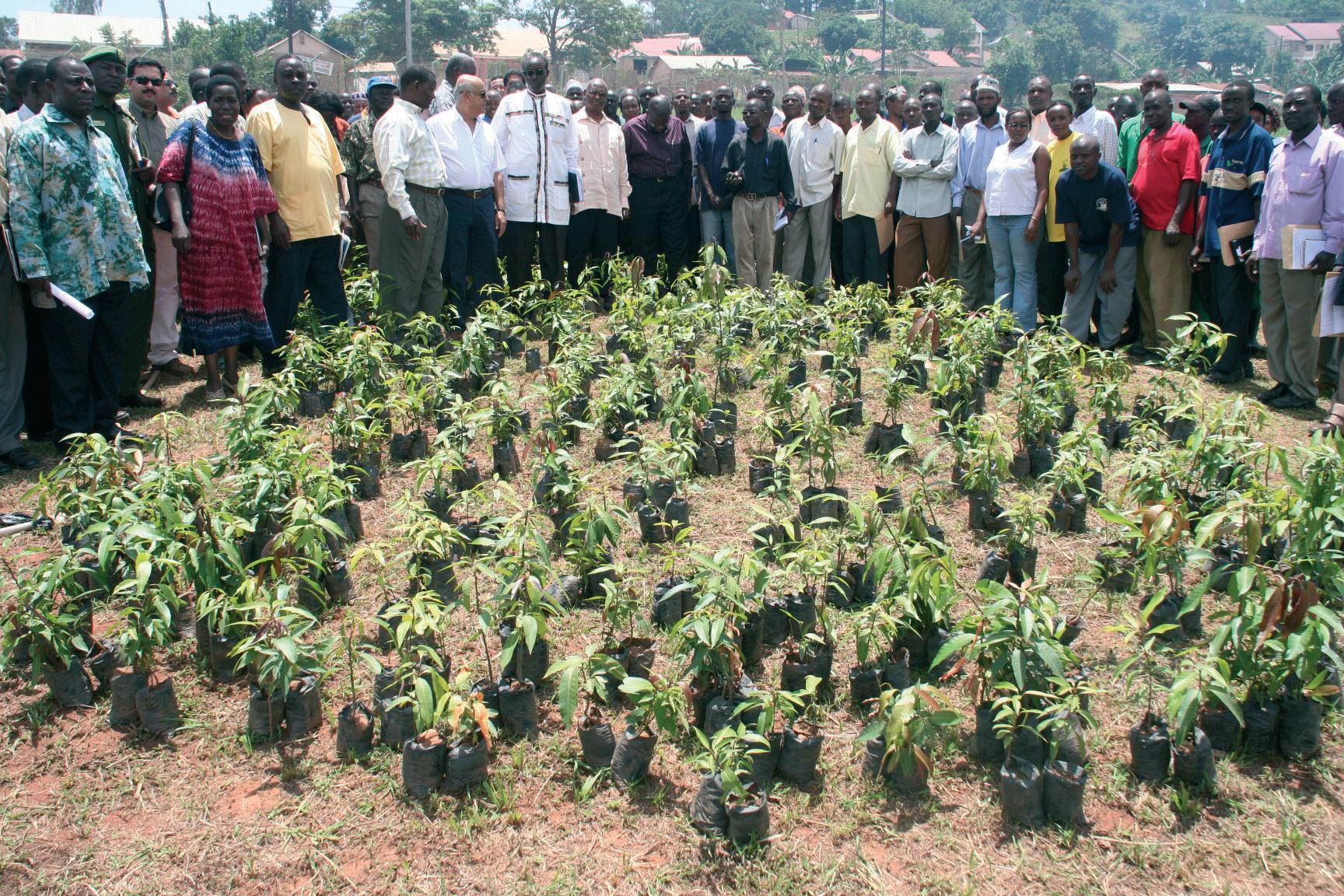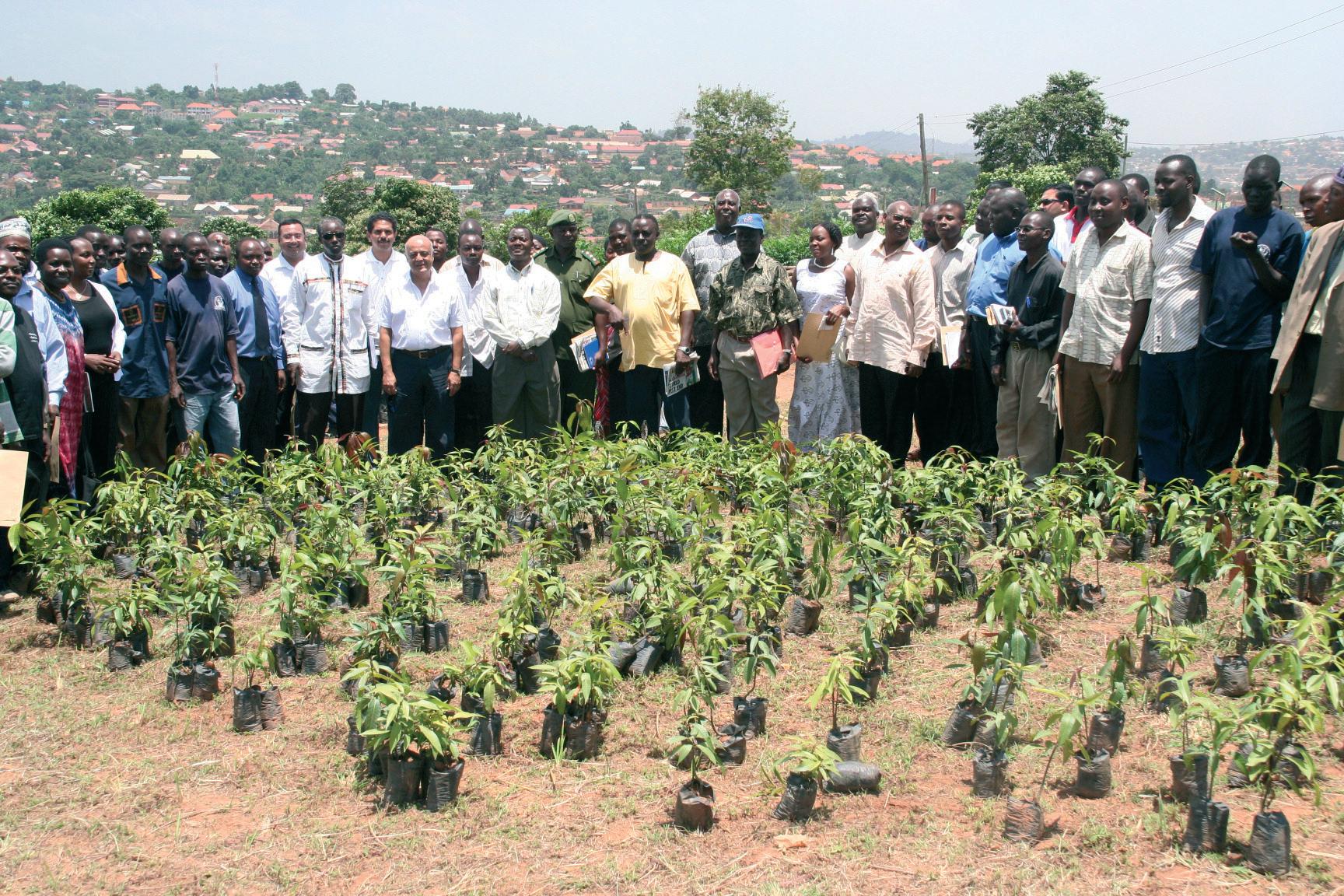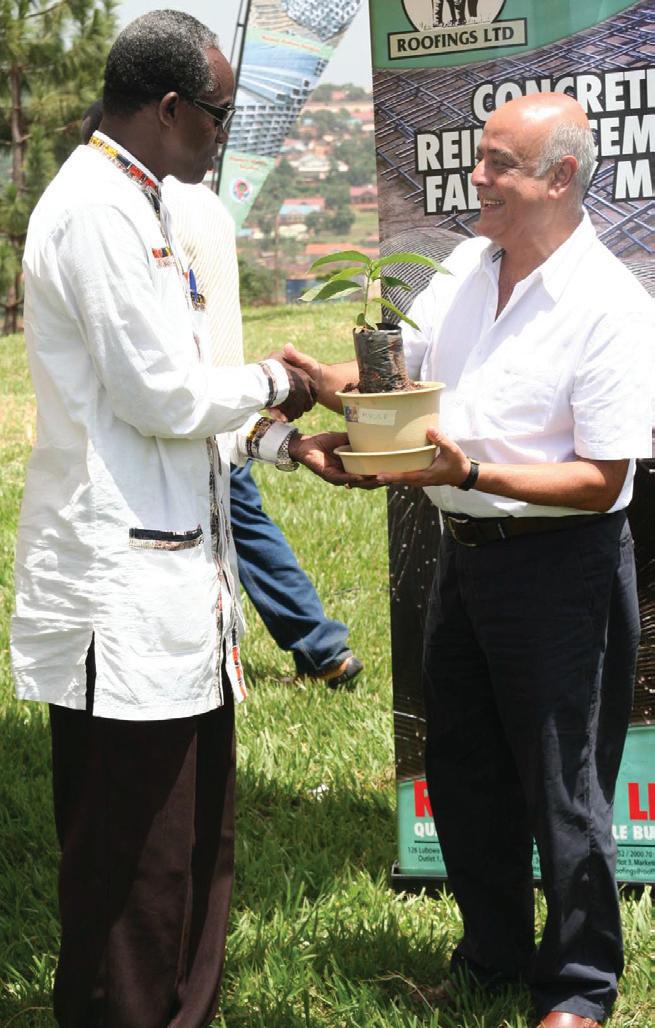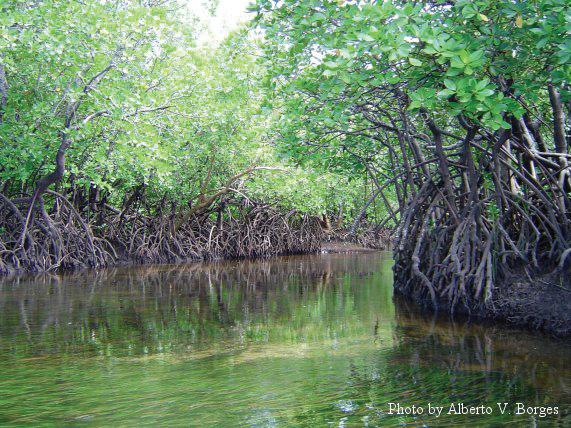
20 minute read
Ozone Day is marked
Little to celebrate as Ozone Day is marked
By Obadiah Ayoti
Advertisement
As the world prepares to mark the International Day for the Preservation of the Ozone Layer, there is little to write home about if the increased depletion is anything to go by.
Although many countries have ratified the Montreal protocol to protect the thin layer of gas that protects all life on earth from the harmful effects of ultraviolet radiation from space, there has been little effort towards implementation of the all-important treaty.
United Nations General Assembly adopted September 16 as the International Day for the Preservation of the Ozone Layer in 1987 and called for concerted efforts among member states to put prerequisite measures in place to protect the layer.
Although over 100 countries have ratified the protocol including all the five East African states of Kenya, Uganda, Tanzania, Rwanda and Burundi, they fall short on implementation especially on the provision that calls for manufacturing of ozone friendly products.
Kenya ratified the protocol in 2000 but still lacks resources and expertise to fully conform to the letter and spirit of the treaty.
Kenya’s Permanent Secretary in the Ministry of Environment Prof James Kiyiapi says that plans are at an advanced stage to establish a climate change national centre to coordinate environmental issues including ozone preservation.
According to the PS, the centre will not only provide information on climate change but also develop a national climate strategy and action plan which will among other things set out the government’s programmes aimed at curbing ozone depletion.
He warns that unless Kenya and other African countries which are vulnerable to climate change come up with strategies to reverse the trend, the dreams of achieving the United Nations Millennium Development Goals (MDGs) by 2015 will not be realised.
To combat the impacts of climate change, Prof Kiyiapi notes that his ministry has partnered with that of Energy to embrace the Clean Development Mechanism (CDM) projects which are not only environmentally friendly but also based on non-green house gas emitting technologies especially on non-carbon renewable energy.
At the same time, Prof Kiyiapi challenged the Kenya Meteorological Department (KMD) which is charged with among other things monitoring Global Atmospheric Watch (GAW) of ozone to provide early warnings to enable the country plan in advance for conservation of environment in order to achieve sustainable development.
Generally, CDM projects must contribute to global efforts to achieve stabilization of green house gases concentration in the atmosphere, generate maximum economic, social and environmental benefits and transfer technologies that are locally appropriate, environmentally friendly and demonstrate energy efficiency with necessary precautions to avoid dumping of substandard technologies.
Most countries still emit the chief greenhouse gases (GHGs) which are responsible for global warming which include carbon dioxide (CO
Kenya’s Ministry of Environment and Mineral Resources Permanent Secretary Prof. James L. Ole Kiyiapi fields questions from journalists during his recent visit to the Kenya Meteorological Department (KMD) headquarters in Nairobi to open an international workshop on climate change.
2), methane (CH4), nitrous
oxide (N
2O), tropospheric ozone (O
3), and
hydrofluorocarbons (HFCs).
These gases prevent the escape of heat initially received from the sun by the earth’s surface leading to global warming.
Experts say that the continual increase in CO2 and other GHGs in the earth’s atmosphere has already led to temperature increase which is projected to rise from 3-5°C by the year 2100.
This is further demonstrated in increases in global average air, ocean temperatures, widespread melting of snow and ice and rising global average sea level.
Other characteristics of global warming are shifts in rainfall patterns causing changes in weather patterns, prolonged drought, floods, melting of glacier especially in the Arctic, diminishing snow cover, heat waves, storms and hurricanes.
In East Africa for instance, Mt. Kenya and Mt. Kilimanjaro which are important sources of river streams and springs have lost 92 per cent and 82 per cent respectively of ice mass in the past century.
As a result of this, there is a significant drop in water levels of some lakes, rivers and dams causing severe socio-economic impacts since majority of the population is rural based which depend on rain-fed subsistence agriculture.
Apart from reducing emission and promoting alternative source of energy, experts argue that reforestation is very critical in mitigating climate change. The rationale here is to increase the forest cover hence natural carbon sinks.

Roofings’ ONE MILLION TREE PROJECT ONE MILLION TREE PROJECT
Roofings Limited, one of the largest steel manufacturers in the Eastern Africa region has not only striven to continuously send better products onto the market, they have also incorporated sound environment management practices into their business. Sikander Lalani, the Chairman/ Managing Director of Roofings Limited shared his views with EnviroConserve AFRICA. Below are the excerpts of the interview
EnviroConserve: Briefly tell our
readers about Roofings Limited?
EnviroConserve: In 2003, you
introducedthe‘instantbuild’solution onto the Ugandan market. What exactlydoesitentailandwhatwasthe reaction towards this innovation?
Lalani: Yes. Instant build solution is a prefabricated twin unit which we introduced in the size of 6mx16m (2 rooms of 6x8m each). It’s purely a steel structure roofed with sheets and you can hardly sight any use of wood hence the advantage to save trees and conserve the environment. The Ugandan market embraced the idea especially the NGO’s and the British High Commission.
Lalani: Roofings Limited is one of the best and largest steel manufacturers in the Great Lakes region. Having been established in 1994, we have grown from strength to strength and are continuously improving upon our technologyinordertoefficientlysatisfy our customers’ needs. EnviroConserve: There is a boom in
the construction industry in Uganda andtheGreatLakesregioningeneral. How is Roofings Limited coping with the market demands?
Lalani: We are coping very well becauseourmainstrengthisqualityand reliability. We have done everything possible to make our business a one stopshoppingcentreforallyourquality steel products.

EnviroConserve: You have been in
business for more than a decade. Tell us about your community initiatives in respect to CSR activities?
Lalani: We have been involved in a number of activities ranging from Health, Education, Sports, job creation, integrity and we value fairness especially to the disadvantaged. We pattern with organizations like the Red Cross,UgandaSocietyfortheDisabled, The Kampala Kids League, Uganda
ONE MILLION TREE PROJECT
Badminton Association , Health Initiatives for the Private Sector (HIPS), National Forestry Authority (NFA) ,National Environment Management Authority (NEMA) to mention but a few.
EnviroConserve: In the recent past,
you appeared in the press giving out seedlings to community leaders. Was this a one-off or, it is part of your CSER?
Lalani: This is part of our CSR. We started a seedling project in 2003 where we have spent almost UShs 200 million to plant over one million trees. Our first phase of this project has seen us give away 10,000 plants (flowers, trees and fruits) for free to the community especially; schools, churches, our staff and others.
EnviroConserve: Roofings Limited’s
products have got both the UNBS and Norwegian accreditation for good quality. Apart from the ISO 9001:2000, are there any other certifications for quality or CSER you recently acquired or are currently pursuing?
Lalani: We are continuously carrying out research in order to match international standards. Our quality standards have enabled us attain customer confidence in Uganda and the Great Lakes. This can be evidenced by the fact that we have been awarded the president’s export award as number one metal exporter four times consecutively for the years 2003, 2004, 2005 and 2006. EnviroConserve: Finally, tell us more
about your current production capacity, future plans and the company’s general contribution towards Uganda’s economy and the Great Lakes region as a whole?

Lalani: Our commitment is to excel in our service quality and to strive to grow and attain a global presence.
The company’s production capacity is at approximately 120,000 M tonnes today and our projection is to grow it to 200,000 M tonnes in a few years to come.
Our target is to expand our operations and encompass galvanizing and steel rolling by 2010. If this is achieved it will increase our capacity to create jobs and contribution in form of taxes to government. We are proud to be contributors towards the development of Uganda’s economy and the Great Lakes region at large.

Bio law to improve research and productivity
Uganda has developed a new Biotechnology and Biodiversity policy. SPECIAL CORRESPONDENT, Peter Wamboga-Mugirya spoke with the State Minister for Planning Jachan Omach , the Executive Secretary of the Uganda National Council for Science and Technology (UNCST), Dr Peter Ndemere; one of Uganda’s leading biotechnology researchers, Dr Andrew Kiggundu and Mr Arthur Makara, Senior Science Officer at the UNCST who is in-charge of Bio-safety. Below are excerpts of their perspectives.
Question: Mr Omach give us a brief background to the formulation of the policy.
Hon.Omach: In the interest of strengthening Uganda’s capacity in science, technology and innovation (STI), the Ministry of Finance, Planning and Economic Development, through an elaborate national consultative process, developed a National Biotechnology and Biosafety Policy (NaBBIO-P) that is aimed at guiding development and application of modern Biotechnology in Uganda, while at the same time ensuring safety in research and application of the technology for national development. This policy was endorsed by Cabinet on April 2, 2008.
Q: What is the rationale for this Biotech policy?
Well, I will look at the rationale in four major perspectives. First, the actual and potential benefits of biotechnology will augment government efforts to develop and modernize the economy in line with Uganda’s national planning framework. However, some aspects of biotechnology commonly known as modern Biotechnology have generated some technical and economic concerns like any other new technology, especially in regard to commercialization. This calls for an effective regulatory system, manned by competent Ugandans to keep a watchful eye on the advancement of this technology from within and outside the country. Such a regulatory system starts with the policy.
Secondly, modern biotechnology is regulated the world over. Uganda ratified the Convention of Biological Diversity (CBD) in 1992 and the Cartagena Protocol on Biosafety in November 2001.
The Cartagena protocol is aimed at regulating trans-boundary movement of GMOs and minimizing any perceived risks to human health and the environment. This protocol is the first legally binding international instrument on issues regarding products of modern Biotechnology.
One of the key obligations to the implementation of the protocol was to review existing policy and legal environment and determine the adequacy in regulation of modern biotechnology by the parties. In case of Uganda, the policy and legal review process revealed inadequacy of existing policies and laws to harness the potential benefits while at the same time addressing the perceived risks of biotechnology.
The consensus from this review process therefore, was that there is a strong need to put in place an explicit policy on Biotechnology and Biosafety as eventually realized this April 2008.
Third, the African Union (AU) has put in place the African Model Law on Biotechnology and Biosafety. It has also instituted a Panel of Experts in Biotechnology which is charged with the responsibility of advising the AU on matters regarding safe deployment of Biotechnology in development efforts.
Uganda, being a member of the AU is expected to adopt the recommendation of the AU and also domesticate the African Model law on Biosafety.
Lastly several countries in Africa and many others in Europe, North America and Asia have already embraced modern Biotechnology, while at the same time putting in place mechanisms for regulation of its products.
Such countries in Africa include neighbouring Kenya which adopted its Biotechnology Development Policy in October 2006, as well as Burkina Faso, Egypt and South Africa all of which have both National Biotechnology Policies and relevant legal instruments in place and a number of research and commercialization activities relating to Modern Biotechnology.
Q: Dr Ndemere, the minister has spoken of developments in Kenya a close neighbour to Uganda. What is the progress in terms of biotechnology policies? Is there any collaboration between Uganda and Kenya in as far as biotechnology is concerned?
Dr. Ndemere: Yes, Kenya has developed her biotechnology industry much ahead of the rest of her East African Community (EAC) partners. Kenya passed their National Biotechnology and Bio-safety Policy in 2006 and is wellahead in the formulation of their draft law on biotechnology. Currently, Kenya has GM maize and potatoes being researched on, under confined field trials, which it may soon move towards commercializing. The implication of this is that such crops may easily find their way into Uganda, hence the preparation we’ve made to formulate this policy. But also at the EAC level, the original three countries [Kenya, Uganda and Tanzania] have been talking to harmonize existing legal, institutional and policy frameworks on biotechnology and biosafety. Even at bilateral level, the governments have been cooperating by facilitating exchange of policy and scientific experts and meetings to learn from each other. As of now, Uganda is at per with Kenya—policy-wise.
Q: Was the policy-formulation a consultative process in order to build consensus on the framework or was it vice-versa?
Ndemere: The policy-formulation was a long and tedious journey—it has taken us six years to have the policy approved by government. What we have now is the Bill on Biotechnology and Biosafety, which is before Cabinet.
Q: Honorable minister you sit in cabinet where the Biotech and Biosafety Bill currently is. But first of all, how much is Parliament involved in this biotechnology and biosafety debate; policy and legal-making process?
Bio law to improve research and productivity
involved. Relevant committees have been consulted and effectively made their input over the years. Secondly, at the moment, MPs are engaged in discussions on the new Bill whose accompanying regulations are at the AttorneyGeneral’s chambers for fine-tuning.
Q: Dr Kiggundu, you’re the head of Uganda’s National Agricultural Biotechnology Centre (NABC) at the Kawanda-based National AgroResearch Laboratories (NARL). Typically, you’re a research scientist practicing molecular biology or biotechnology. What is there for you in this policy?
Dr. Kiggundu: As research scientists, we’re very happy that finally government has acted positively to provide a conducive environment in which we shall carry out our work. But specifically, the science of Biotechnology, where recombinant DNA is used to identify genes needed in modifying a plant for better resistance against a pest or disease and for better productivity or further still for boosting the nutritional value in that nutrient-deficient plants, this policy legitimizes such research and offers official support and guidance for the development of this science. So we’re delighted that the Government of Uganda has given its approval to the policy, which places us at per with our colleagues in neighbouring countries engaged in biotechnology. The policy also provides guidelines to biosafety—the safe use or application of biotechnology.
Q: MrArthur Makara, how does the policy take care of interests of our biodiversity? As a plant scientist you’re in better position to explain.
Mr. Makara: This policy offers a lot of support towards the environmental biotechnology, such as conservation of our natural resources, particularly the ability to conduct plant-genetic characterization and the conservation of such genetic resources. With biotechnology, scientists are able to identify what plant biodiversity belongs to Uganda—even human beings can be clearly identified via genetic characterization and placed where they belong. In fact, in this era of invasive plant species, under biotechnology, there’s a modern practice called bar-coding, with which plant scientists can use a short strand of DNA or genome of a plant or animal, to classify it for taxonomical purposes at molecular level. Simply, in case of plants, we use leaves, pollen and even roots, for taxonomy at molecular, it becomes easy to separate or combine plants according to their family or specie classification, than using physical characterization which many times is deceptive.
Q: Dr Kiggundu, does biotechnology enable scientists to conserve what is available?
Kiggundu: Yes biotechnology enables us to do that. Through what we call in-situ and ex-situ conservation (that is in the field/gardens and in the laboratory/greenhouse, respectively) we’re able to conserve seeds of crops according to their genetic structure and category etc, and this becomes easy to identify their origin and uses and so forth. Also scientists are able to guide the general public to access genetic resources of their interest or choice.
Q: Hon Minister, how long do you think it will take before Uganda has a biotechnology and biosafety law in place?
Omach: When all the draft regulations currently with the Attorney-General’s chambers are finally out, I expect in the next three months or so Uganda will get a new legal framework for biotechnology and bio-safety via an Act of Parliament. I’m very optimistic that this is going to happen, because Uganda urgently needs to prepare herself with this law.
Q: Lastly, Dr Kiggundu, is Kawanda using biotech to conserve Uganda’s staple crop—the banana for instance?
Kiggundu: Yes indeed. The banana we eat and cherish in Uganda can only be found here and is therefore most important to us as food, a culture and a trade commodity. If you travel around the world, you may not easily find it elsewhere, but typical around Uganda. Therefore, given the immense pressure from diseases, pests and environmental degradation, scientists at Kawanda have found biotechnology one of the most efficient means of protecting it from those diseases that threaten its existence and multiply its planting materials via biotechnology’s plant tissue culture. This technology is offering cleanplanting materials, which enables farmers to grow healthier and much more productive bananas
from pg 33
As part of the efforts to implement the Montreal Protocol, the United Nations established a multilateral fund worth $1.5 billion in 1990 to assist developing countries to reduce their production and consumption of ozone-depleting substances.
According to the United Nations, all 189 Parties to the Montreal Protocol have permanently eliminated more than 1.5 million tonnes of annual production of chemicals that destroy the ozone layer.
This will go along way in reducing skin cancers, cataracts and other health threats which comes as a result of ozone depletion.
The United Nations’ efforts to preserve ozone layer have bore fruits as alternative ozonefriendly products are being manufactured in all the industrialized countries. Some developing countries such as India, China and Brazil have also followed suit and started to manufacture ozone friendly products.
To ensure fully implementation of the Montreal treaty, the United Nations Environmental Programme (UNEP) initiated four assessment panels namely Scientific, Environmental, Technology and Economic.
One of the successes of the panels is the identification of at least 90 chemicals which should be phased out due to their impacts to the ozone layer.
Scientists warn that was it not for the protocol, ozone depletion would have risen by the year 2050 to at least 50 per cent in the northern hemisphere’s mid latitudes and 70 per cent in the southern mid latitudes, about
Saving Kenya’s mangrove forests

Afraid at the alarming rate at which mangrove trees are disappearing, a group of women is determined to help conserve the precious trees
By Henry Wahinya
Adetermined group of women at Kenya’s coast has resolved not to let the precious mangrove trees disappear and has embarked on a rehabilitation project through which they are reaping benefits from the bold decision.
With support from the Kenya Marine and Fisheries Research Institute (KMFRI) and The Kenya Tidal Forest Project, the women of Gazi are leaving nothing to chance in their efforts to protect and restore mangrove forests by establishing an ecotourism venture that profits from the value of the mangrove’s scenic beauty and biodiversity.
To save the allure of Gazi Bay, the women came up with The Gazi Women Mangrove Boardwalk project – an eco-tourism community development project.
The boardwalk provides a 300 metre -long relaxing walk through animal-rich mangrove forest. The walk is punctuated by cool resting points strategically located. In addition, the boardwalk contains a view point providing a panoramic view of the ‘bathing mangroves’.
On the walk, visitors spot the impressive bird life, the scurrying crabs of diverse colours, not to forget the jumping mud skippers. Visitors can also enjoy the nutrient- rich oysters, fresh from the oyster farms beside the boardwalk.
By boat, the boardwalk can be accessed from Chale Island or the adjacent Sea Horse resort. A canoe ride through the serene mangroves with local fishermen makes the whole experience unforgettable.
The project that is also run by Gazi Women as an alternative source of income enables visitors experience first hand the serenity of the mangrove fauna and flora the women have restored.
Visitors are encouraged to personally take part in the rehabilitation of a mangrove tree and take a canoe through mangrove creeks, make excursions to the coral reef and enjoy bird watching. Visitors experience a traditional African village and a taste of local Swahili cuisine.
“By making that decision, the women had set out to measure the total economic value of the ecosystem goods and services produced by Kenya’s 60,000 hectare of mangrove forests. They discovered that the economic value of shoreline protection alone outweighed the total value of all other uses,” says Dr Mark Huxham, a scientist linked to the mangrove project.
“It is an interesting example of the way in which economic valuation of ecosystem services can be effectively combined with communitybased initiatives,” Dr Huxham says. Located 50 kilometres south of Mombasa and about 15 minutes drive from Diani Beach, in Kwale district, Gazi Bay is one of the country’s most celebrated and studied mangrove bays in the world.
With a rich history behind it and convenient location, Gazi Bay has been able to attract global attention worldwide.
Gazi village has a unique and rich history. In the colonial periods ‘Gasi’ was Kwale District’s administrative centre.
It contains ruins that were once used as a concentration centre for slaves before being shipped to the Far East. The ruins were also used by Sheikh Mbaruk Bin Rashid as his residence.
Dr Huxham says mangrove forests are among the most productive wetland ecosystems on earth. These tropical coastal woodlands provide a crucial habitat, protect coral reefs from sedimentation, and, as demonstrated by the tsunami of 2004, play a critical role in protecting tropical coastlines.
“They are also one of the most threatened habitats. Historically, mangrove forests lined three-quarters of all tropical and subtropical coasts,” he says.
Dr Huxham says before, less than half of these forests had remained, and an estimated two percent more had been degraded every year for firewood, building materials, coastal development, and industrial shrimp fisheries.
Gazi Bay had been under threat as a result of serious exploitation. Coastal mangrove forests provide essential ecosystem services, including protection from coastal erosion, filtration of water pollutants, provision of habitat for sea life, and sequestration of greenhouse gases and yet, threatened by overexploitation, conversion to other land uses and damage from pollutants.
Like in other parts of the coastal region, members of the local community depend on the mangrove for fishing, building poles and firewood, and for medicinal products; hence the need for rehabilitation, conservation, and sustainable utilization of mangroves.
Research conducted by Kenya Marine and Institute (KMFRI) says mangroves have been felled with little or no natural regeneration. The result has been severe erosion of the coastline due to complete elimination of the fringing mangroves. KMFRI says good mangrove forests today can only be found in two areas of Kiunga in Kenya and in River Rufiji delta of Tanzania, but their conditions are also threatened.
Women participation was carried out under the umbrella Community Participatory Forestry for the Rehabilitation of Degraded Mangrove Forests Project spearheaded by James Kairo and Jared Bosire, both from KMFRI. The restored mangroves in Gazi, Mida, Tsunza and Wasini are surrounded by a population that depends to a large extend on the resources of the area. Community participation played a big role in ensuring protection of the initiative. Dialogue with the local people was initiated in seeking their cooperation in protecting the plantations. The goat keepers in villages agreed that they will not allow the animals to enter new plantations and graze. Instead they accepted to tie the animals until the trees had established. Others agreed to graze their animals elsewhere
Mangroves in Kinondo Creek, Gazi Bay, Kenya


